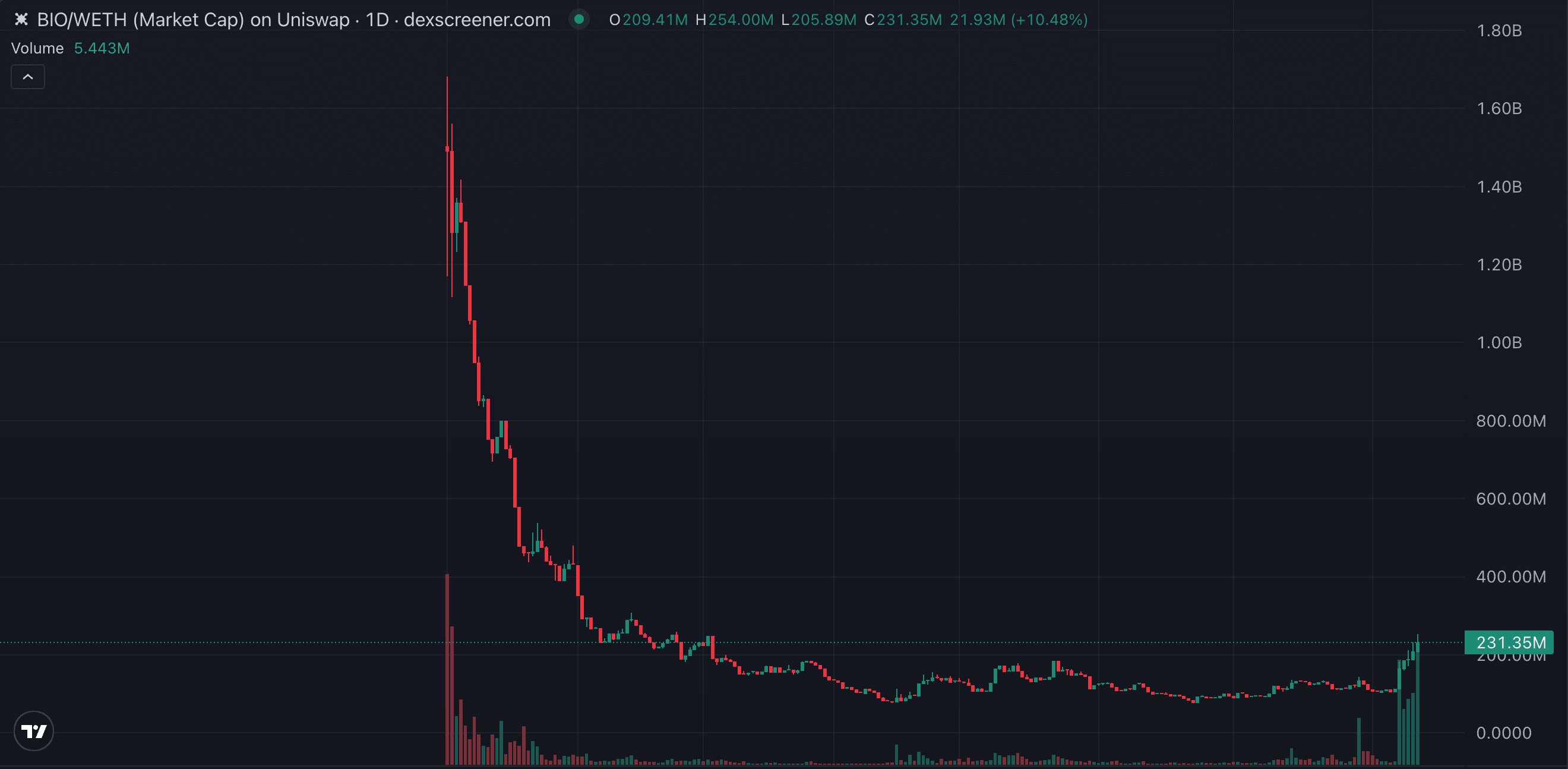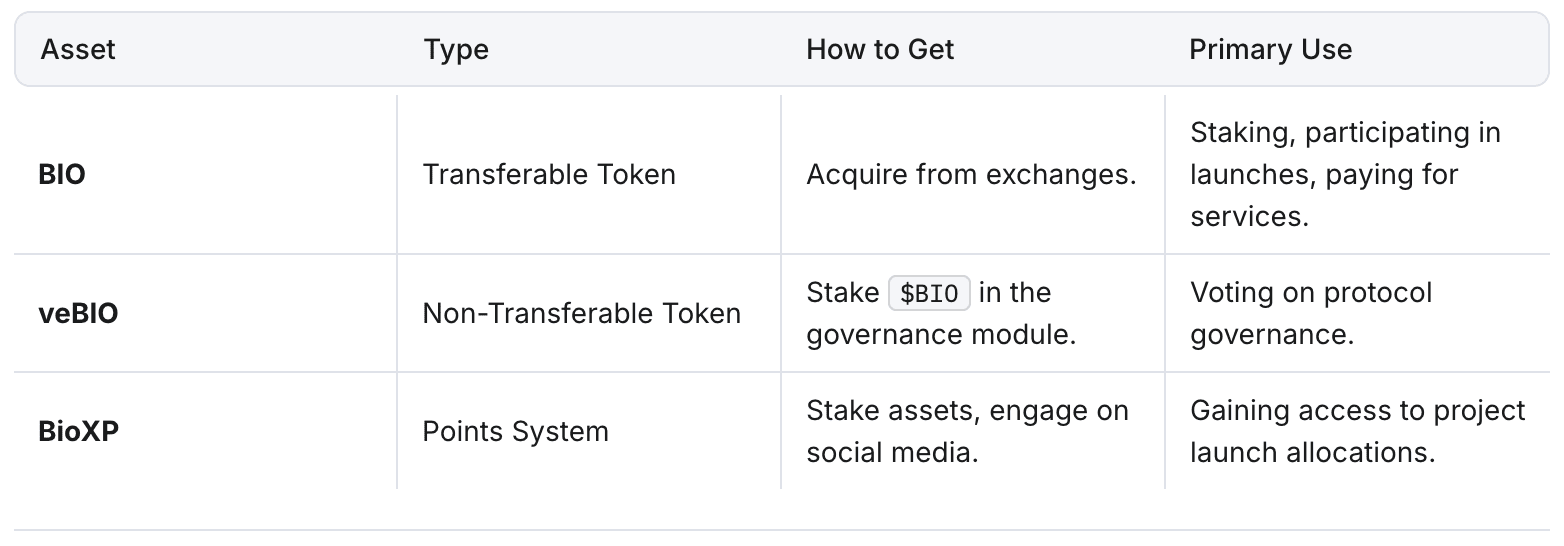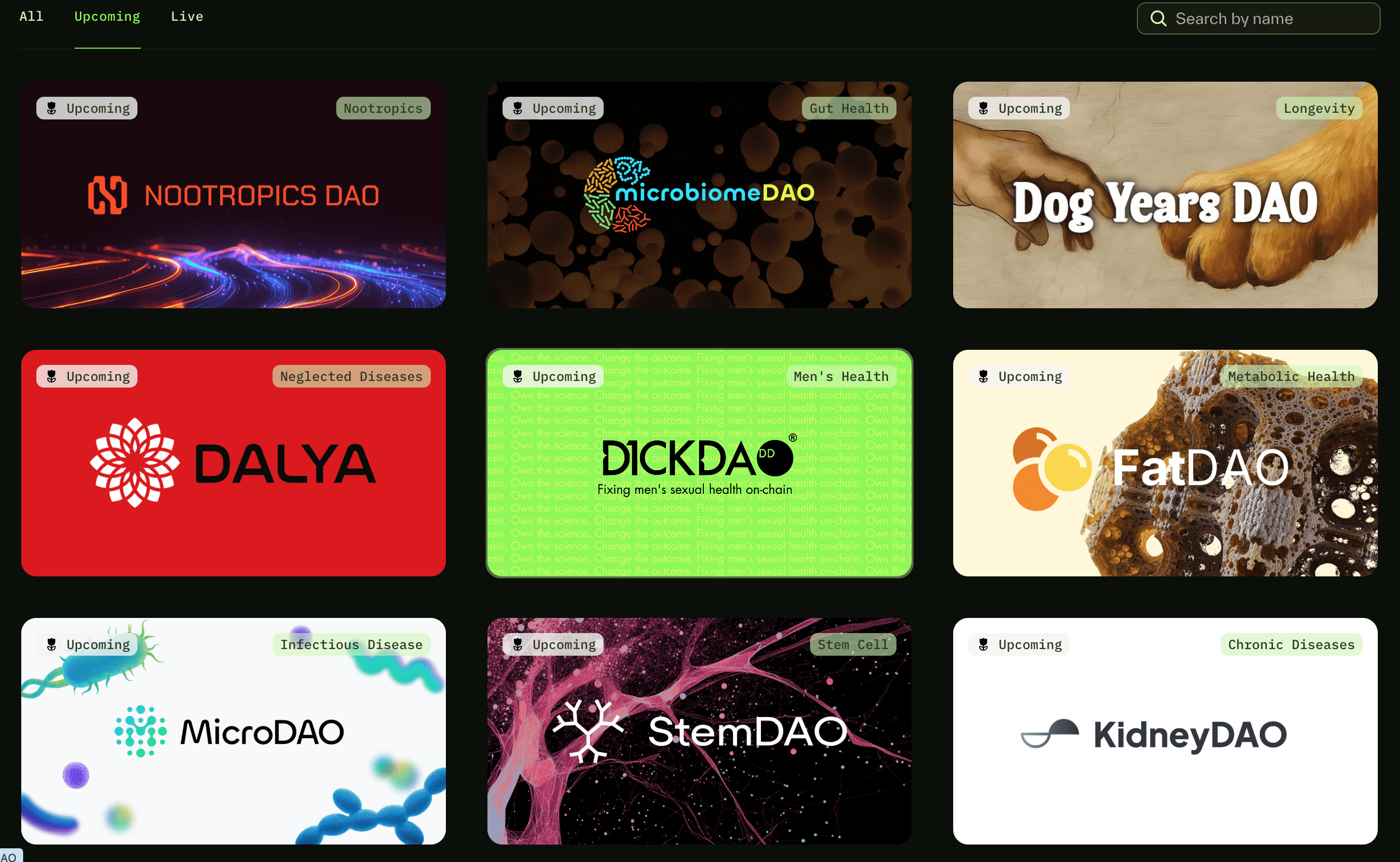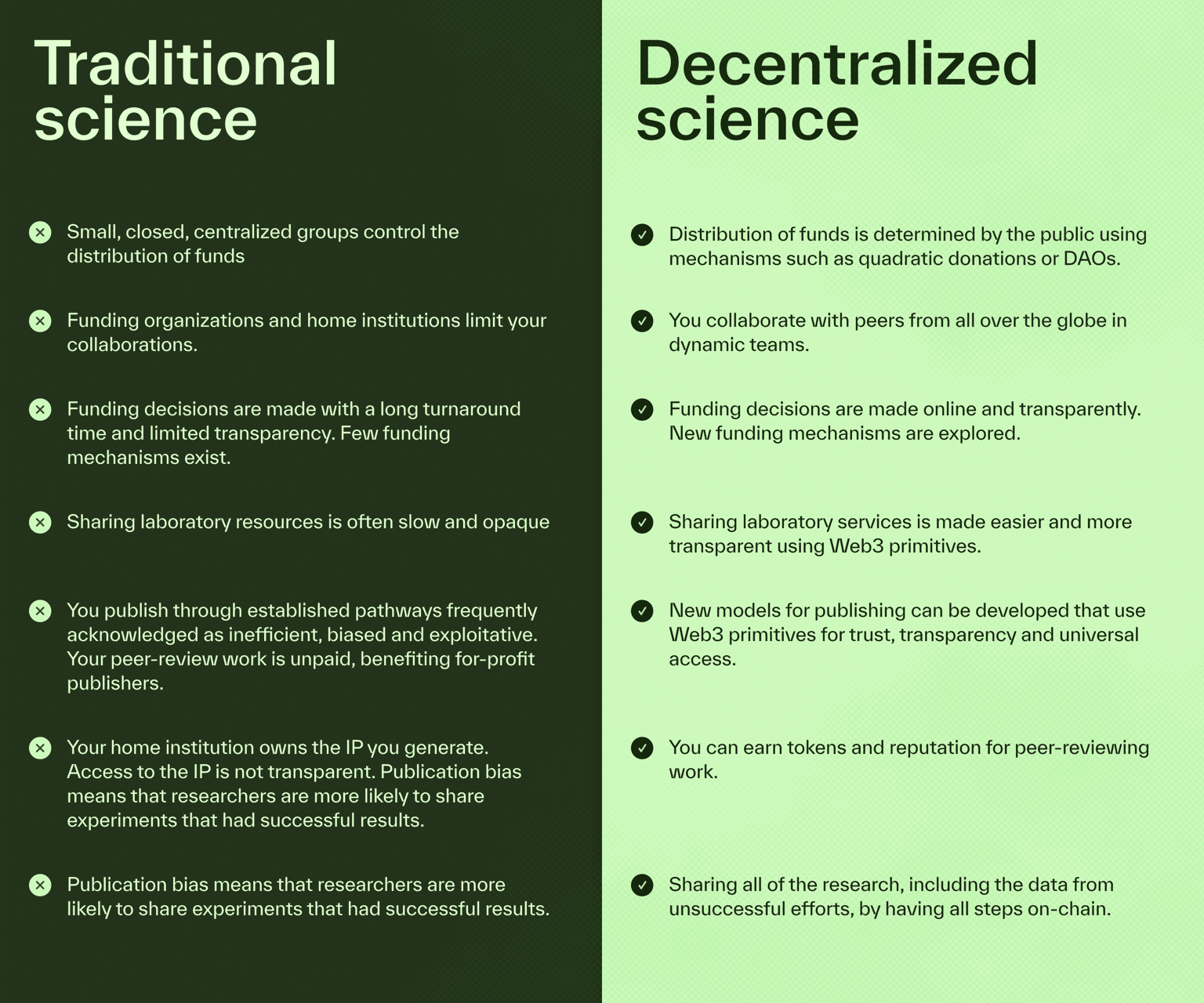Once regarded as the vanguard of 'the fusion of research and crypto', the leader of the DeSci track, $BIO, has faced pressure since its launch in January—despite being backed by top investors including Vitalik Buterin and CZ, it has not escaped the dual impact of market conditions and liquidity, with its market cap once shrinking by 95% from its peak, becoming a focal point of community dissatisfaction and skepticism, and leading the track, which once produced billion-dollar market cap myths like $RIF and $URO, into a low point.
However, with the recent official launch of BIO Protocol V2, introducing new mechanisms such as Launchpad and staking points, the total amount staked surpassed 100 million BIO within a week of launch, and the market cap rapidly doubled to over $200 million, reigniting market interest and imagination in the DeSci track.

Why has the luxurious $BIO lineup fallen from grace?
The listing story of BIO was originally a highlight in the DeSci track: leading exchanges like Binance, OKX, and Kraken all participated, with the trading volume surpassing $2 billion on the first day of TGE, and the FDV once reaching $250 million, making it one of the most sensational scientific crypto asset issuances at the beginning of 2025. However, the excitement concealed the seeds of a price drop.
However, the heat of this feast did not last long. BIO was issued through an auction model with an initial circulation ratio higher than most new coins, combined with a valuation that was pushed up at listing, making its price appear inflated in the absence of immediate utility. In the early market, purchases were more driven by narrative and sentiment rather than practical value. As key features such as Launchpad, staking systems, and BioXP points remained in the planning stage, investors quickly realized that the tokens they held would not yield actual returns in terms of participation benefits or governance rights in the short term. The gap between valuation and use cases became the primary force driving the price down.
BIO's decline is closely related to timing issues. Core functions did not launch simultaneously on the day of TGE, leading to a loss of confidence during the waiting period. Additionally, the independent operation of Launchpad by Molecule Catalyst has dispersed funds and attention, weakening the cohesion of the main platform. Coupled with the macro market entering a risk aversion phase, capital quickly withdrew from high FDV projects without immediate cash flow. The lack of continuous news support and coordination with product launch rhythm has gradually led BIO, once a star project at the beginning of the year, into a valley of thin transactions and price bottoming.
The Resurrection of BIO Protocol
Creating an Experimental Field for Accelerated Research
In the first half of 2025, BIO Protocol has traversed a tumultuous journey—from the narrative peak at the beginning of the year sliding down to price lows, yet the pace has not slowed down. It has not only delivered the most dazzling market performance in the DeSci track but has also pushed several biopharmaceuticals to the threshold of clinical trials, allowing 'on-chain research' to first smell the scent of genuine medical validation.
The price pullback has not dampened the team's ambitions; rather, it has led to more construction efforts: in May, BIO communicated through community governance to postpone the unlocking of the team and advisors, sending a signal to the market that 'we are here for the long haul.' The research progress is also noteworthy—VitaRNA and VitaFAST have both initiated clinical trials in the UAE, taking only 11 months from concept to enrollment, while traditional models often require 4-6 years; 14 compounds predicted by AI to have a success rate exceeding 85% are awaiting Q3 efficacy readouts. Meanwhile, five new BioDAOs, including QBIO, Long Covid Labs, Curetopia, SpineDAO, and MycoDAO, have been established, raising a total of $8.9 million this year to fuel this high-speed research machine.
V2: The Leap from DeSci 1.0 to DeSci 2.0
Additionally, the BIO team officially launched Bio Protocol V2 in August, aiming to transition research financing and execution into 'high-speed mode' to address issues such as high FDV initial offerings, lack of immediate functionality, and ecosystem dispersion faced in DeSci 1.0.
The core of V2 lies in four engines:
Low FDV Fixed Price Initial Offering: Following the successful paths of Pump.fun and Virtuals, V2 has reduced the starting valuation of projects to $205,000 FDV, with 35% of tokens sold directly, and all raised $BIO injected into the liquidity pool, providing depth and price momentum at opening, tightly binding the community to the project.
BioXP Points System: It quantifies behaviors such as staking, LP, on-chain interactions, and social spreading into points, linking them to the DeSci Score, with points valid for 14 days, used for allocating quotas for low FDV projects, and high-engagement users will continue to enjoy priority opportunities.
Staking & veBIO: Staking BIO not only earns points but also acquires governance voting rights; staking other assets within the ecosystem yields higher points, encouraging support for the entire network.
Liquidity Engine: Automatically generates LP after the initial offering, charging a 1% transaction fee on each trade in the secondary market (70% goes to the project treasury, 30% to the protocol), forming a positive cycle of 'active trading—research funding increases—results advance—market enthusiasm reignites.'

Accelerating Implementation, Welcoming a New Cycle of DeSci
VitaRNA and VitaFAST are pushing DeSci from concept to reality. The two drugs will simultaneously advance trials in the UAE, Singapore, and Switzerland, hoping to become the first cases fully funded by DeSci and entering clinical stages within two years at a cost of less than $500,000. This not only breaks the traditional barriers of drug development that often require years and tens of millions of dollars but also sets a benchmark for on-chain research. Meanwhile, BIO is piloting a collaboration with Pfizer to explore a compliant Intellectual Property Tokenization (IPT) model, building a new mechanism for capital flow and value distribution for future drug development.
Bio Protocol will launch a decentralized research agency to automate key research processes such as drug screening, clinical operations, and funding allocation. The upcoming BIO Copilot will serve as an on-chain research assistant for scientists, advancing research to a programmable, scalable, and machine-driven stage, freeing it from human bottlenecks and ushering it into a high-frequency iteration of intelligent operations.
Additionally, the capital and market flywheel began to quietly start. The Launchpad 2.0 plan aims to launch 10-20 low market cap projects in the coming months, covering areas such as Agent, IPT, and research tools, with an average fundraising of $70,000, starting with the Base chain, followed closely by Solana. Meanwhile, the "Founding LP Program" is attracting liquidity providers willing to invest over $100,000 in BIO LP, offering participants benefits such as yield enhancement, points bonuses, priority allocation, and exclusive support. By drawing on the high returns from projects like Virtuals, BIO seeks to ignite a new wave of market enthusiasm, creating a closed loop of research funding, token flow, and information flow to propel the arrival of "Scientific Singularity."

What is DeSci? The Decentralized Engine for Accelerating Research
If the operational logic of traditional science is like a massive steam engine, then decentralized science (DeSci) is more like a high-speed electric motor—lighter, faster, and more transparent.
In the past, the funding sources for scientific research were almost firmly held by government foundations, academic institutions, and large pharmaceutical companies. A research project often had to undergo months or even years of approval processes from project application to funding disbursement; research results were locked behind expensive paywalls, and even publicly funded projects could not provide free access to data and papers for the general public. The storage of research data, ownership of intellectual property, and transformation of results were all tightly controlled by centralized institutions and processes. While this model is stable, it also brings inefficiencies, conservatism, and a natural rejection of disruptive innovation.
What DeSci aims to disrupt is this top-down, slow, and closed scientific ecosystem. It uses blockchain's open ledger to ensure transparency in funding flow, progress of results, and data usage; it replaces small review panels with decentralized autonomous organizations (DAOs), allowing the fate of research projects to be determined by a broader community vote; and it employs tokenized incentive mechanisms to deeply bind early supporters with the interests of research outcomes, attracting more capital and talent. This model not only shortens the funding turnover cycle of research but also breaks down barriers of discipline and geography through global collaboration, providing opportunities for innovative ideas that would otherwise struggle to obtain funding.

In this track, BIO Protocol is undoubtedly a representative and ambitious player. It not only provides early financing channels for biotechnology projects but also builds a complete set of infrastructure including project selection, fundraising, on-chain liquidity management, data transparency, and research automation. Through BIO, researchers can 'crowdfund' research funding directly from the global community, just like launching a crypto project; investors can engage in the project at its initial stage and share the profits when the research results are commercialized. Unlike traditional research, what BIO wants to achieve is a scientific ecosystem that does not require waiting for grant approvals, is not monopolized by a single institution, and allows everyone to participate and benefit.
Summary
BIO Protocol has experienced drastic fluctuations from the high-profile launch at the beginning of the year to price bottoming mid-year, yet it has achieved a phase rebound with the launch of V2. The new low FDV initial offering, points staking, and liquidity mechanisms have injected new momentum into the ecosystem, reigniting market interest in the DeSci track. However, whether the rebound can continue and bring stable returns still depends on the coordination of project launch rhythms and market conditions, and uncertainties remain in the short term.


